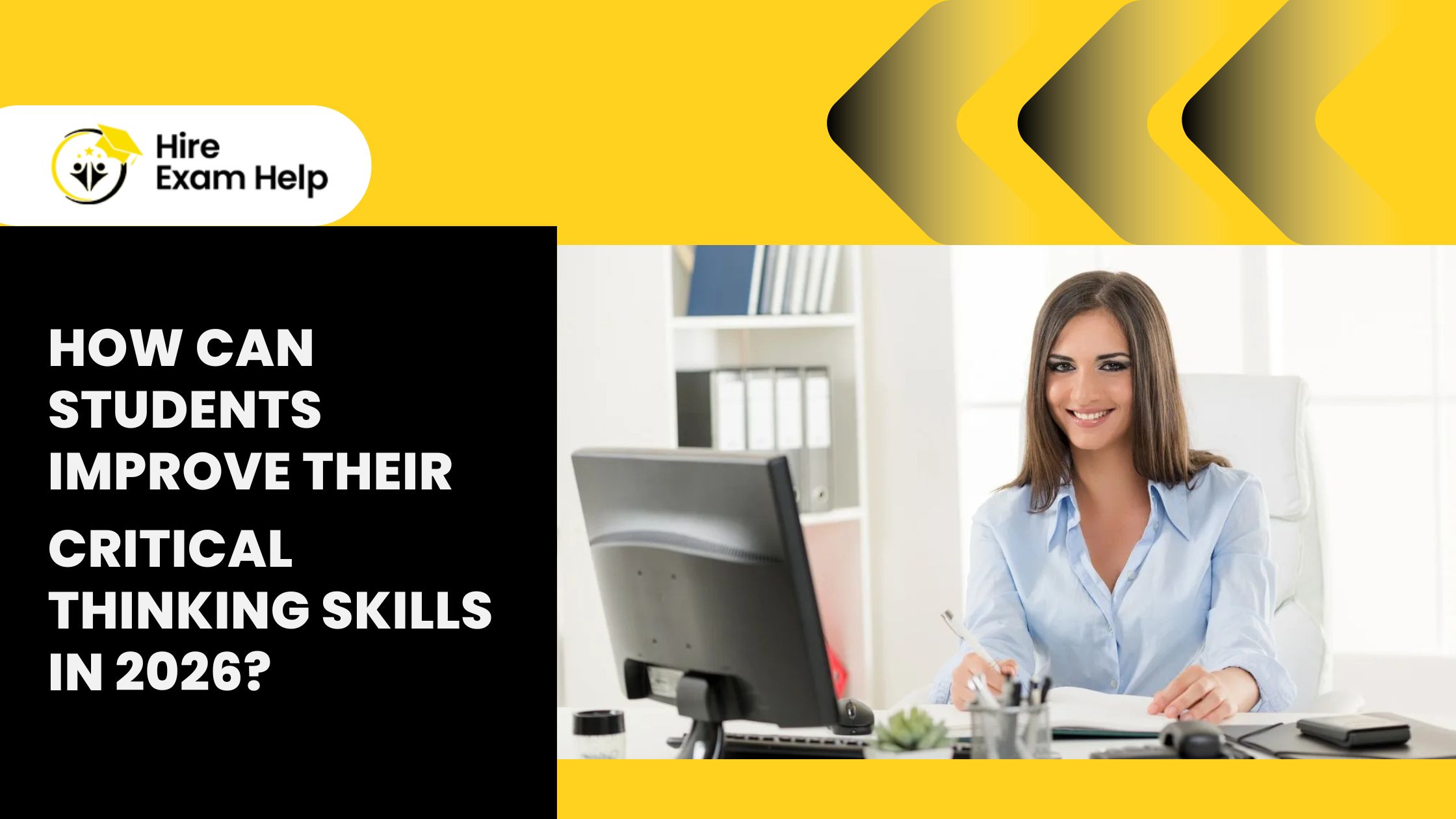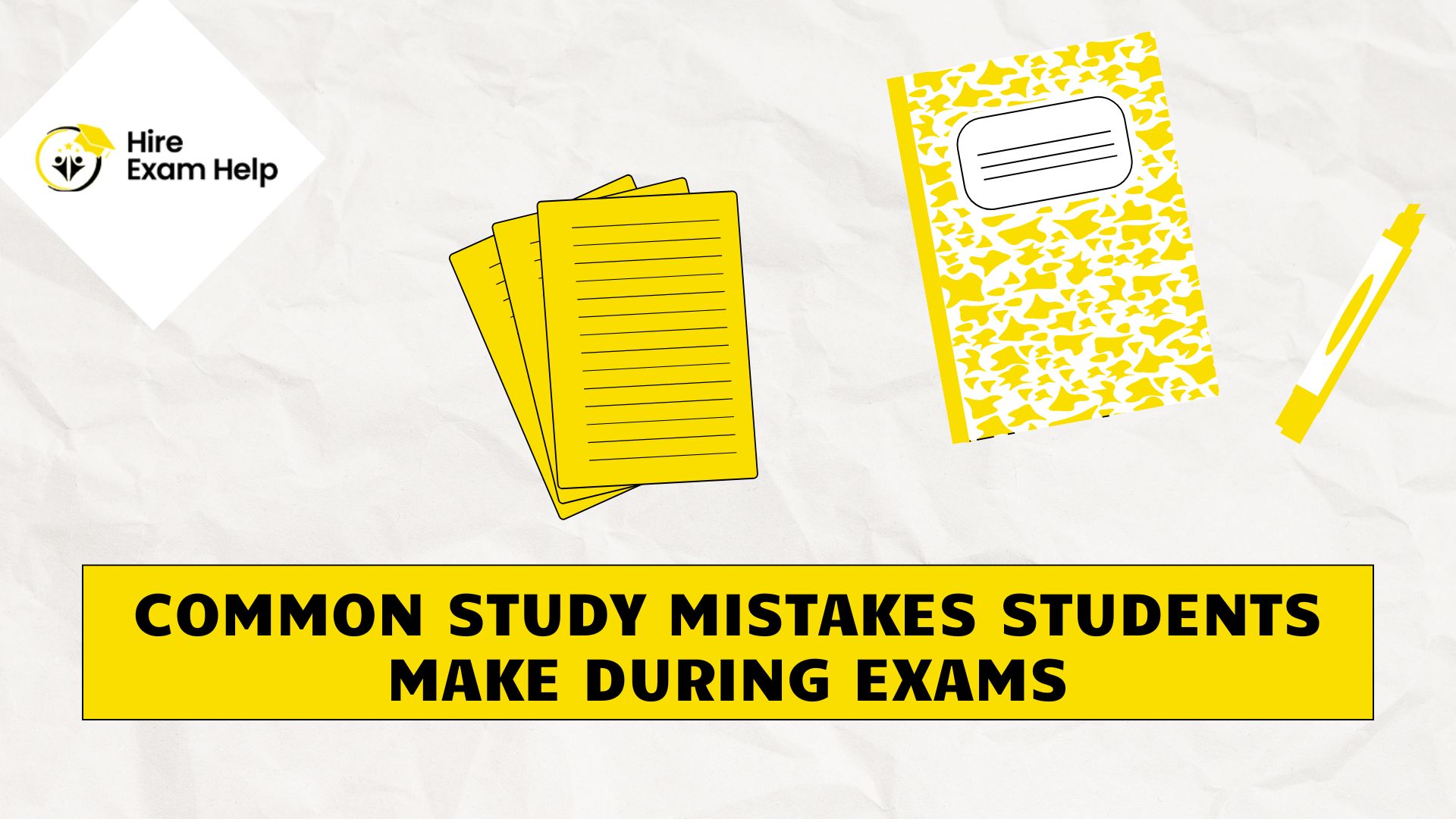


No matter how education changes by 2026, students will still greatly benefit from learning critical thinking skills. Critical thinking refers to the ability that students will develop to interpret facts, evaluate sources, and arrive at judgments that they can trust. It’s not just important for course success, but it will serve the students well beyond graduation.
With the advent of digital technology, AI, and instant sharing of information, the need for critical thought to be independent and judgments to be sound has become even more critical. The document covers useful ways for students to become better at critical thinking in 2026 and how exam help sites and structured learning routines can create a positive impact.
Critical thinking is the capacity to analyze, interpret, and evaluate information objectively prior to forming a judgment. The mastery of this skill entails studying ideas and phenomena in depth, considering possible assumptions, as well as analyzing evidence based on which conclusions are drawn.
When used in academic circumstances, critical thinking entails dissecting perplexing problems, recognizing credible sources, and contemplating multiple perspectives prior to responding to questions. This grants students access to transition from mere memorization and seeing “what” takes place to identifying “why” and “the way” things happen. When it comes to 2026, there will be so much data on the internet, and that would make the skill even more necessary. Students will have no choice but to examine the source of the data before they use it in an essay, a test, or a debate.
The education structure now highly emphasizes students’ ability to rote learning to analytical and problem-based teaching approaches. Furthermore, the argument has been advanced by employers who now have the ability to employ students who are able to think freely and solve problems with a lot of ideas and innovation. Critical thinking can be advantageous to students in the following ways:
People who build a solid foundation in critical thinking are more prepared for today’s hurdles, such as reading content generated by machines, judging digital sources, and choosing morally right options.
In 2026, countless learners have adopted virtual education as their go-to method of learning. Virtual classes, recorded lectures, and remote assessments are now common features of them all. Yet, one still remains a significant obstacle to overcome- how to sustain high levels of motivation and intellectual rigor when one is operating in a purely electronic setting.
Online learning platforms don’t have the pleasure of face-to-face meetings and spontaneous discussions in real-time. However, they completely forget to teach students how to be more inventive independently, challenge what they listen to or read, and communicate with their fellow learners in message boards or recorded conversations. In addition, a number of tools, such as help with exam readiness or online coaching, can have a great impact on the way students approach online tests critically, rather than simply regurgitating expected responses.
In order to understand ways of enhancing critical thinking skills, first of all, we need to identify factors that hinder students from being critical thinkers. Among the obstacles are:
When students are aware of the hurdles to critical thinking, they can start developing solutions to move past those barriers and improve their ability to think critically.
Enhancing critical thinking abilities is a process that demands continuous commitment, introspection, and willingness to learn. Here are a few effective methods that learners can try to sharpen this crucial competence.
Active learning involves actively participating in the subject matter rather than merely passively observing and acquiring knowledge. Instead of simply referencing their notes, they have the option of producing summaries, formulating exam questions, and conducting analysis. Embodying learning approaches such as ideation, partnering, or imitating a practical situation helps the student rev up their brain in various ways. Having students restate information in their own words offers an extra dimension of comprehending material, which helps them remember it in the future.
For instance, when a person deepens their comprehension of scientific hypotheses, it is helpful for them to pose questions such as, “How does one know that this hypothesis is worth considering?” or “What is the relationship between this hypothesis and the previously understood?” It is from this habit of questioning that the critical thinking of the reader begins to grow.
It is very important that students learn how to assess their work through reflection, one of the most important aspects of intellectual thought. Correctness entails an important element in superior-level mental faculties. If students produce additional journal entries after each training session or essay examination, they can evaluate how well they performed and then adopt new strategies to improve their next effort.
Students examine how their presuppositions and attitudes are affecting their grasp of subject matter. When students have access to learning advisors and other credible academic resources for hire, accurate time use guidance enhances the significance of a student’s reflections; informed by mentors’ comments, students make better and more strategic decisions in the next expression of their learning journey.
Critical thinkers are not easily convinced by anything. They question the assumptions and then look at the evidence.
Students should frequently and routinely ask themselves:
The development of both curiosity and skepticism in students equips them with the ability to differentiate credible information from untrustworthy information, which is of the utmost importance in the era of digital media and tools like AI.
Collaborating with co-learners supports the development of varied points of view. Working as a group on exchanges and controversies, as well as researching contextual issues, affirms students’ ability to think critically.
An opportunity for such thinking took place in the form of online interaction in 2026, such as through computer-simulated conversations utilizing AI, collaborative learning groups, and animated acting. I think students should engage in debates, not for the purpose of reinforcing their own opinions but for provoking their ideas, so as to become better reasoning associates and better speakers.
The most effective method of enhancing critical thinking skills would be by applying theories to real-life situations. It could be understanding a piece of news, making a judgment on an issue of morality, or filling in a blank on a professional paper, applying them to look at actual situations infuses relevance into learning experiences.
Specifically, a learner of finance might see how inflation influences purchasing decisions of buyers; whereas, a learner of social psychology may see how social media might have an effect on our short-term attention span. These types of applications convert theories that are typically very theoretical and academic into ideas and concepts that are more applicable to real-life challenges, to apply this knowledge to further understanding of the subject.
Constructive feedback serves as one of the best ways for students to hone their ability to think critically. Feedback from teachers, mentors, or tutors can reveal blind spots in students’ minds; and enhance their ability to analyze on a deeper level.
Assistively, exam help resources used ethically can equip students with strategies to worry less about memorizing responses, and more about reasoning during tests. These types of resources can arm students with how to recognize patterns in exam questions, read and analyze data, and utilize a targeted framework to address exam or standardized test questions.
But students should only leverage such resource support for actual learning, and not to shortcut having to learn and memorize content.
The most effective method of enhancing critical thinking skills would be by applying theories to real-life situations. It could be understanding a piece of news, making a judgment on an issue of morality, or filling in a blank on a professional paper, applying them to look at actual situations infuses relevance into learning experiences.
Specifically, a learner of finance might see how inflation influences purchasing decisions of buyers; whereas, a learner of social psychology may see how social media might have an effect on our short-term attention span. These types of applications convert theories that are typically very theoretical and academic into ideas and concepts that are more applicable to real-life challenges, to apply this knowledge to further understanding of the subject.
Critical thinking has a close relationship with problem-solving. When it comes to students understanding the process of problem identification, coming up with solutions, and assessing results, they should. Employing systematic general approaches to tackling issues such as setting up the situation, collecting solid facts, thinking of various options, and testing potential solutions can help improve reasoning skills.
We can introduce students to conducting such exercises in incident-based systems of learning, and usually, they are enhanced by coaching services available as online exam help.
Goddamn it, all these gadgets and gizmos sometimes make us models of fools. On the one hand, we can use them to help us learn new things. On the other hand, we can also use them to sit on our arses and be lazy.
Likewise, kids can either use those tools in the way they are meant to be used or allow the tools to replace their minds altogether. They can employ digital resources to delve into new concepts, fact-check, or even emulate experiments, but it should be their understanding and disposition that determines the outcome. In this way, technology is a tool for inquiry and not a crutch.
Commentary on growth mindset and critical thinking 0 Comments Having a growth mindset, which is the assumption that abilities might get better with effort, is extremely necessary for developing critical thinking skills. Challenge-based learning can be adopted by students who look at it as an opportunity for learning instead of being a hindrance, since they are more likely to challenge deeply and search for alternative solutions.
By 2026, in today’s competitive academic environment, this mindset can not only develop resilience but also foster intellectual curiosity and persistence in problem-solving.
Nevertheless, there are others who would think that exam help is just a means of taking shortcuts. Conversely, though, credible centers that offer learning aids do not help students cheat their way through their exams but rather facilitate improvement of their skills. The centers offer structured assistance, practice exams, and memorization strategies, which all promote methodical test-taking.
For instance:
Undetectable by AI detection tools: When used ethically, these resources promote deeper understanding, self-assessment, and critical engagement with academic material—helping students prepare smarter, not just harder.
AI is revolutionizing education, but at the same time, posing fresh challenges. Many students depend on AI-produced material when writing papers or when finding answers, which can diminish their capacity to think critically if not utilized properly.
In order to keep their mental autonomy, students will have to figure out how to:
Students in 2026 can enjoy the advantages of both – thoroughness and speed – through the support of technology combined with the application of critical thinking.
Even in 2026, one thing that will still support both academic and personal growth is the importance of critical thinking, even though we are living in an increasingly faster-paced, technologically-driven environment of learning. What separates the great students from the average ones is the capacity to question, analyze, and think reasoning.
Students who are willing to utilize active learning, reflective practices that involve working together, and ethical exam help will be able to improve how they analyze and approach real-life challenges with confidence and logic. The skill of critical thinking is something that can be learned. Students who teach themselves this skill will then be better able to maneuver through the demands of the overly complex modern world, whether it be in exams, classrooms, or future workplaces.


